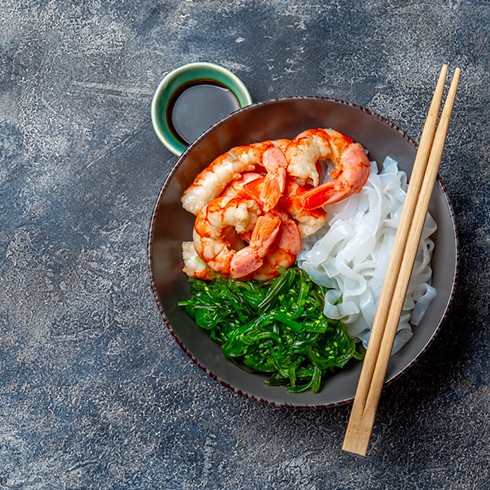Nutritional Programme Guide.
Nothing is easier than losing weight. The only hard thing is making the decision to do it.
Losing Weight.
If you have a lot of weight to lose, it's often because at the slightest problem, you turn to food. This means you have one more problem: your weight and the health issues that come with it. In that case, you need help. Alone, it won't be possible. Some associations or groups offer diets where you can eat a little bit of everything but in limited quantities. That will be good initially. The day you want to go further, you will also need to evolve. But you need to be helped.
If you only have a few kilos to lose, likely from occasional restaurant indulgences, outings, or lack of exercise, you don't have much to do other than avoiding unhealthy food and excessive portions. Incorporating some exercise into your routine will certainly help you achieve your goals.
Basically, to lose weight, all you need to do is eat as little as possible.
Cutting.
There is a big difference between cutting and losing weight. Cutting means losing only fat and minimizing muscle loss as much as possible. And that's actually what many people would like because it looks good in the mirror.
However, cutting will require greater discipline and organization.
But controlling one's diet is the only sustainable long-term solution.
How to cut ?
While it's not possible to naturally gain muscle mass without gaining some fat, when losing fat, there's a risk of losing a bit of muscle as well. However, it's essential to try to minimize muscle loss because muscle is what burns fat. So, the more muscle you have, the more calories you'll burn. Fat being an energy (calorie) reserve, you'll have a better chance of burning it if you lose less muscle mass.
How to do it ?
Your basal metabolism is key. If you consume the same number of calories as you expend, your weight will not change. If your calorie intake is above this, you will gain weight. However, if your diet contains fewer calories than what you consume, you will lose weight.
However, be careful! If you give your body too few calories, instead of drawing from its reserves, it may react poorly, play it safe in the long term, and eliminate parts of your body that cost it energy, namely muscle. However, that's not what we want, since it's muscle that burns fat. If we have less muscle, we will burn less fat.
Therefore, your calorie intake should be slightly below your basal metabolism, but not too low.
What is the right value ?
Since everyone is different, based on their body type, experiences, profession, and stress level, it's important to start with a quantified calorie baseline.
How to quantify the start of my diet ?
Take a piece of paper and write down everything you eat in a normal day: the foods and also the quantity for each meal. Note any deviations on the weekend, beverages, etc. Once you've written everything down, look up the number of calories for each food item (you can find this easily on the internet). Total up all the meals for the day, and you'll know how many calories you consume on average per day.
Now, observe the effect this way of eating has on your body: Are you gaining weight? Are you putting on fat mass? Are you losing weight?
Based on this, you take a number slightly below (maximum 200 calories) and now you know the number of calories your body needs to start cutting.
Building your diet.
Once you have the total number of calories your diet will consist of, you now need to plan each meal. Each of these meals should include proteins, carbohydrates, and, to a lesser extent, fats.
Proteins.
As for proteins, you must first know the quantity your body needs. At this stage, you need to assess whether you are an athlete or sedentary.
If you are sedentary, you can start with 1 gram per kilogram of body weight. If you are a strength athlete, you can go up to 3 grams. You will then need to divide the protein intake you have defined into at least 6 meals (it can be more depending on the calorie intake you need).
Example :
Let's take an example: you are a man, an athlete who trains in weightlifting 5 times a week. You weigh 85 kilograms and you are 1.70 meters tall. You are 38 years old. Your abs are not visible, and your goal is to see them. You have approximately calculated your calorie intake and currently consume 3200 calories per day. But on the weekend, you indulge a bit when going out, which results in a slight abdominal bulge, but not excessive.
So, we will start around 3000 calories. But, of course, we will eliminate the excesses from the weekend and the snacks in front of the TV at night.
You estimate that you need 2.8 grams per kilogram of body weight because you don't want to go to the maximum or too low. So, you need 2.8 x 85, which is 238 grams of protein. You divide these 238 grams into 6, which is 39.6 grams per meal.
Is it really important to keep the same amount of protein in each meal? No, not particularly. Meals like breakfast or the one just after training will be more conducive to protein assimilation than a snack, for example.
But the total should reach approximately 238 grams without too much imbalance between meals. Once the quantity is decided, you now need to choose the quality.
What proteins ?
- White meats
- Low-fat cheeses
- Egg whites
- Protein shakes
- Fish
- Low-fat yogurt
- Lean beef
- Legumes
Carbohydrates.
Depending on your tastes, choose the foods you prefer while calculating the protein and calorie intake. Now, it's time to add carbohydrates. Choose carbohydrates with a low glycemic index. In other words, slow sugars:
- White or whole grain pasta (depending on individuals)
- White or whole grain rice (depending on individuals)
- Quinoa
- Oat flakes or cereal
- Sweet potatoes
- Rice or corn cakes
- Whole grain bread
For each meal, you will include carbohydrates as well as greens (fruits and vegetables). Regarding fats, first look at how many are provided in the diet you have put together. If the number of calories is lower than what you had planned, you may be able to add omega-3 and omega-6. If you are just at the calorie level, don't add anything. However, right after training, you can consume fast sugars: dates, honey, figs, sweet drinks, candies...
Once you have constructed your diet with its 6 meals, your post-workout meal with its fast sugars, you are ready to begin your progress.
Change your diet when necessary !
ATTENTION! This diet is a start! It will be valid as long as you see progress. You will need to check your progress every week or every 15 days. With each stagnation, you will need to decrease the calories and be very gradual to avoid losing too much muscle. You can also follow a diet with two or three different regimes. This will allow your body to have a boost on higher calorie days and to descend well on lower calorie days. This way, it will avoid getting used to a routine.
Duration of a cut.
It's certain that the result won't be visible right away. Don't look at yourself in the mirror every day, and don't step on the scale every day either. There will never be many changes in one day, and that might discourage you. Instead, assess once a week or once every 15 days with objective criteria like weight, measurements, and body fat percentage with an appropriate caliper.
The duration of the cutting phase will depend mostly on you! As long as you're not satisfied and you're ready to continue your efforts, you can keep going. But generally, a competition cut can last from 3 to 6 months if the athlete isn't in too bad condition.
Difference between women and men ?
Women tend to accumulate fat more on the hips and buttocks, while men tend to have rolls around the abdomen. It's generally easier for a man to lose fat than for a woman due to the higher presence of testosterone in his body. However, the principles remain the same. Simply give your body slightly fewer calories than its usual daily needs.
However, female hormones still play a role, and water retention is a more significant factor in women. It's also more challenging to remove subcutaneous water from tissues than fat itself. For this, a small blood test at the beginning of the diet will alert you to any deficiencies and difficulties you may encounter: an abnormal level of aldosterone can prevent you from having a well-defined visual. Remember to check.
Foods to avoid.
In general, all processed food is prohibited during a diet, and even more so during a cutting phase. Obviously, the good old grandma's dishes drenched in butter are also prohibited.
Sauces.
They should be avoided, unless you make your own sauce using vegetables, herbs, and low-fat yogurt. You just need to include it in your daily calorie intake.
Sodas and fruit juices.
They are also to be avoided. Most of them contain added sugars. As for fruit juices, they are absorbed much faster than a whole fruit with its pulp. Diet sodas don't contain sugars, but artificial sweeteners. However, they also have an effect on your body. They can stimulate water retention in some individuals. Some also say that they stimulate your need for sugar, but this is not true for everyone. When you are craving sugar, psychological factors play a significant role. You may think you need sugar and only think about it. If an occasional small can of diet soda can help you, it may be worth it and prevent you from giving in to cravings.
Sugar.
It is, of course, to be avoided. Except just after training. Outside of that time, especially do not consume it. If you are addicted to sugar, chocolate, or pastries, the first 15 days can be critical. You will need to break the habit, and it may not be easy. Afterward, your craving will pass. To help you in your fight, a small intake of chrome can help.
Dairy products.
Whole milk contains 3.5% saturated fat. Skim milk contains 0.5%. However, it contains the same nutrients such as calcium, vitamin B2 and B12, but especially proteins. It would be a shame to do without it. Especially since skim milk contains far fewer calories than whole milk. Milk has often been criticized because it has a reputation for thickening the skin. No scientific basis has ever supported this theory. No study has ever proven it. Yet, many competitors deprive themselves of milk, thinking they will appear more shredded on stage. However, this elimination only occurs in the last months of preparation. And the perverse effect of this elimination of milk is that the preparation of these athletes, relayed by social networks, will push amateur athletes who do not compete to eliminate milk all year round. It's a bit like if your idol did a headstand every morning and to become as strong as him in sports, you forced yourself to do the same thing. That's not really related.
Trends influence athletes a lot through social media. Milk hasn't had good press lately. As a result, many have eliminated it from their diet. However, this still presents a disadvantage: your body, to digest milk, will produce a special protein, lactase, which is an enzyme produced in the intestine and which digests lactose. If you no longer consume milk, it's possible that after a certain time, your body may no longer produce lactase, and therefore you may become lactose intolerant. Some scientists believe that lactose digestion is encoded in DNA, which explains the increasing number of lactose intolerant people. Who is right? Maybe a bit of both?
Margarine and butter.
Many advertisements are made around margarines supposedly replacing our traditional butter more effectively. However, margarine, originally, is made from hydrogenated oils that contain trans fatty acids. These fatty acids are very bad for cholesterol, contrary to what advertisements for this product say. Butter does not contain them but contains more saturated fatty acids than margarine, which are also bad for good cholesterol levels. Butter is natural, margarine is highly processed. Butter stimulates the male hormone.
So, what to choose? If you're embarking on a cutting phase, neither of the two. Not because they are bad, but because they are calorie-dense, and if you consume these products, you will have to eliminate more significant ones to maintain the same calorie intake. At present, margarine manufacturers are trying to limit trans fatty acids in their products as much as possible. It's much better than it was a few years ago. But it remains too calorie-dense to be interesting in the case at hand.
If your goal is only weight loss, choose oils for your cooking: olive oil is a good compromise, rapeseed oil has a good ratio between omega-3 and omega-6 fatty acids, sunflower oil, grape seed oil, walnut oil...
However, palm oil and coconut oil are excessively rich in saturated fat and therefore less healthy for the body, contrary to what current advertisements advocate.
Light foods.
If you want to stay serious and follow your diet correctly, it's preferable to prepare your own food rather than relying on industries. Light advertising is very well done, but I advise you to carefully check the labels before consuming such products. Many contain an excess of salt or sugar. While some are acceptable in a diet, others should really be avoided. "Light" camembert, for example, contains ONLY 11% fat... So take the time to check what you buy!
Cheeses.
They contain protein, vitamins, but often a lot of calories. While you can include 0% cottage cheese in a weight loss or cutting diet, hard cheese should be avoided, and other types should be avoided or limited. Their calorie intake is significant and may not easily fit into a diet without eliminating other foods that are essential for the proper progress of your body.
Alcohol.
Alcohol should be avoided in any diet! It only provides empty calories and even disrupts the proper functioning of your intake of sugars and proteins. Not to mention the collateral effects of excess, of course. You may have also heard that red wine is good for health. In fact, it's the tannins that are good for health. But the alcohol it contains offsets the level of the beneficial effects of red wine with an equal level of negative effects. So, if you're on a diet: NO ALCOHOL!
Unload-reload.
This concept is only used for athletes competing in bodybuilding or fitness competitions. The goal is to remove water from the tissues when the person presents a veiled appearance in the last week.
Unload.
We will then do a depletion phase for 3 days, which consists of almost completely removing carbohydrates (10% of the calorie intake), increasing protein intake, increasing hydration, and adding salt.
This maneuver will deplete your body's glycogen reserves, especially since you will continue to train (with long sets and circuits). Additionally, the body will also get used to expelling excess water. The salt will retain some of the water in the subcutaneous tissues.
Reload.
During the recharge phase, carbohydrates are increased to 90% of the daily calorie intake, salt is eliminated, and water intake is reduced each day to a minimum on the day of the competition. Carbohydrates require water to be metabolized, but you provide your body with only a small amount. Therefore, it will use what is available, namely subcutaneous water. Without salt to retain water in the tissues, the muscles will draw from this "subcutaneous water". Since you will have depleted carbohydrates for 3 days, your body will overcompensate and "inflate" the muscles with everything you provide. The appearance of a good recharge is a well "filled" muscle.
Losing weight is therefore easy with a little willpower. However, doing a "cutting phase" is a more delicate maneuver that requires more willpower, more seriousness, and can also take longer.
Conclusion.
Losing weight is easy with a little willpower. However, doing a "cutting phase" is a more delicate maneuver that requires more willpower, more seriousness, and can also take longer.
Related posts
-
 Gaining Muscle Guide.
31/01/2024Muscle building can only be achieved by respecting certain principles: adapt your diet and adapt your training! We...Read more
Gaining Muscle Guide.
31/01/2024Muscle building can only be achieved by respecting certain principles: adapt your diet and adapt your training! We...Read more -
 Losing weight: basic concepts.
Posted in: Perdre du poids07/06/2023Every year, just before the summer, magazine adverts for diets are a big hit. And every year, thousands of people...Read more
Losing weight: basic concepts.
Posted in: Perdre du poids07/06/2023Every year, just before the summer, magazine adverts for diets are a big hit. And every year, thousands of people...Read more -
 Training programme.
Posted in: Perdre du poids01/01/2021Is it fair to say that training during a lean period is different from training during a bulking period? Basically,...Read more
Training programme.
Posted in: Perdre du poids01/01/2021Is it fair to say that training during a lean period is different from training during a bulking period? Basically,...Read more -
 Necessary food supplements and vitamins.
Posted in: Perdre du poids01/01/2021Many supplements can help you when you want to do cutting. However, always pay close attention to their calorie...Read more
Necessary food supplements and vitamins.
Posted in: Perdre du poids01/01/2021Many supplements can help you when you want to do cutting. However, always pay close attention to their calorie...Read more -
 Ideas for dishes.
Posted in: Perdre du poids01/01/2021When you have the feeling that your stomach is never full with your diet, that you're always hungry, konjac is an...Read more
Ideas for dishes.
Posted in: Perdre du poids01/01/2021When you have the feeling that your stomach is never full with your diet, that you're always hungry, konjac is an...Read more
Blog categories
Popular posts
-
 Looking thinner but at a heavier weight? Is that possible?04/10/2021Posted in: Our tipsAdvertising has shaped our thinking! We have been forced for years to believe that losing weight is the key to having...Read more
Looking thinner but at a heavier weight? Is that possible?04/10/2021Posted in: Our tipsAdvertising has shaped our thinking! We have been forced for years to believe that losing weight is the key to having...Read more -
 Proteins for weight loss !29/12/2023Posted in: Our tipsDive into the fascinating world of proteins and their key role in weight loss. Discover how to choose the best...Read more
Proteins for weight loss !29/12/2023Posted in: Our tipsDive into the fascinating world of proteins and their key role in weight loss. Discover how to choose the best...Read more -
 Which foods boost testosterone levels ?07/05/2021Posted in: Food supplementsTestosterone, often associated with virility, has much more to offer than you might think. It plays a crucial role in...Read more
Which foods boost testosterone levels ?07/05/2021Posted in: Food supplementsTestosterone, often associated with virility, has much more to offer than you might think. It plays a crucial role in...Read more -
 10 BENEFITS OF GLUTAMINE.02/01/2024Posted in: Our tipsDiscover the power of L-glutamine, an underrated superhero in the world of amino acids! Essential for revitalizing...Read more
10 BENEFITS OF GLUTAMINE.02/01/2024Posted in: Our tipsDiscover the power of L-glutamine, an underrated superhero in the world of amino acids! Essential for revitalizing...Read more -
 Is there a link between sex and sport?14/11/2019Posted in: LifestyleMany have already asked questions about sex and sport. Most of the time, people want to be reassured by the many...Read more
Is there a link between sex and sport?14/11/2019Posted in: LifestyleMany have already asked questions about sex and sport. Most of the time, people want to be reassured by the many...Read more





